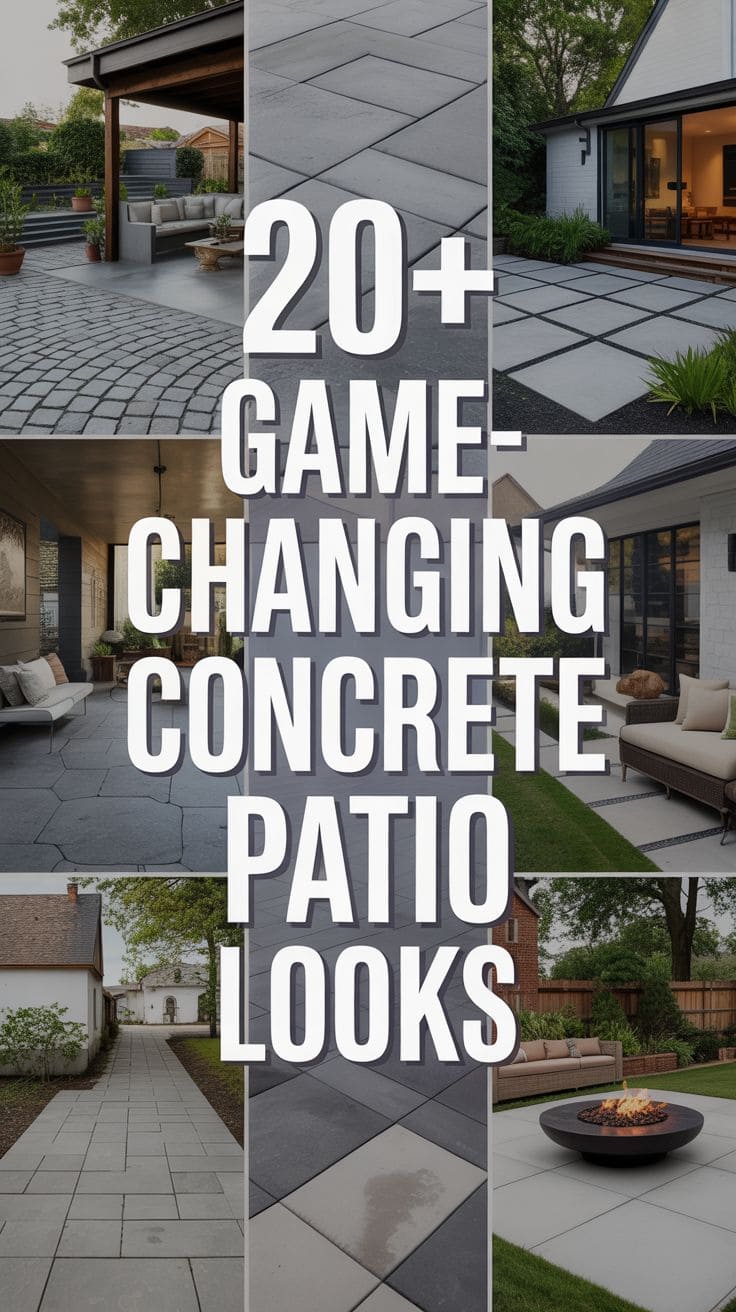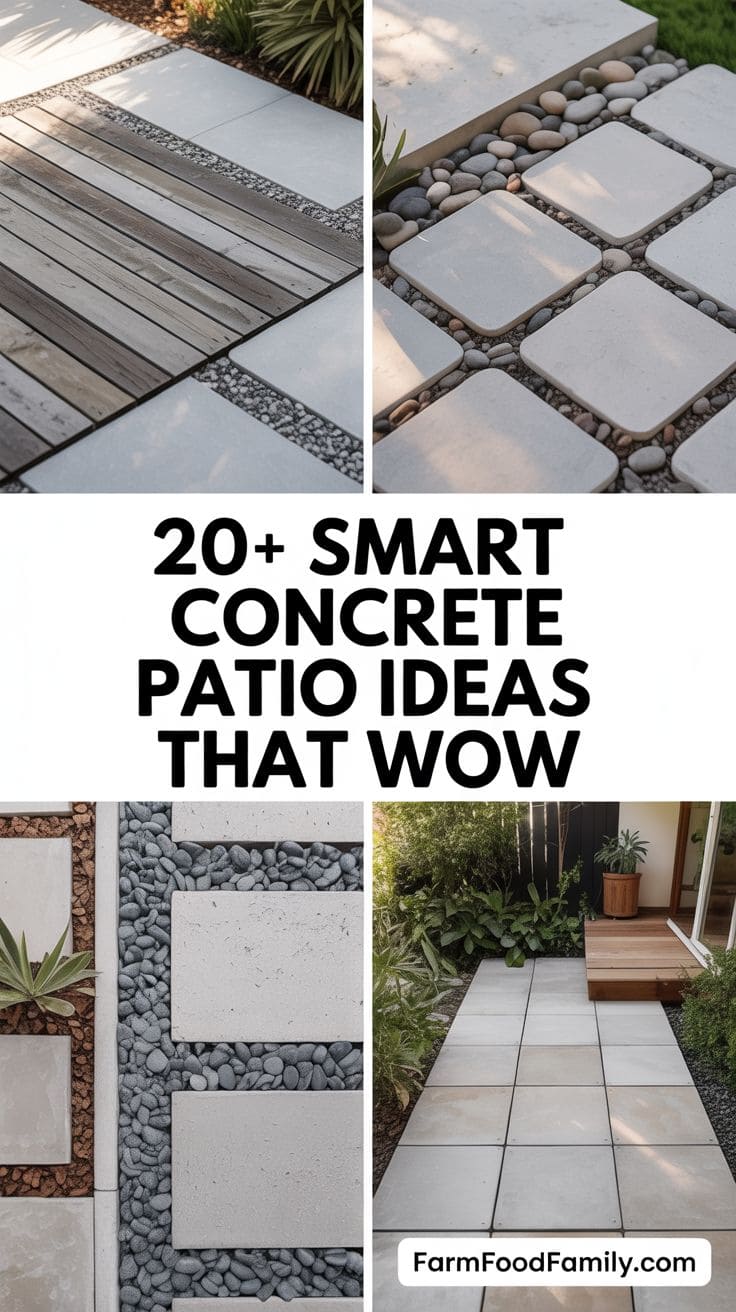Concrete patios are a versatile and durable foundation for outdoor living, offering endless customization through color, texture, layout, and pairing with other materials.
Whether you’re aiming for a rustic style or a cozy look, concrete serves as a blank slate for creative expression.
Unlike wood or stone, concrete can be poured to fit any shape, stamped for texture, stained for color, or polished for a sleek finish.
It pairs beautifully with landscaping, furniture, fire features, and lighting, which is ideal for homeowners who want a low-maintenance outdoor area.
The following concrete patio ideas showcase the many ways concrete can elevate your backyard, offering both practical function and aesthetic appeal. Each idea is meant to inspire unique solutions tailored to your home and lifestyle.
Related: 23 Best Concrete Driveway Ideas and Designs
1. Stamped Concrete for a Stone-Look Patio
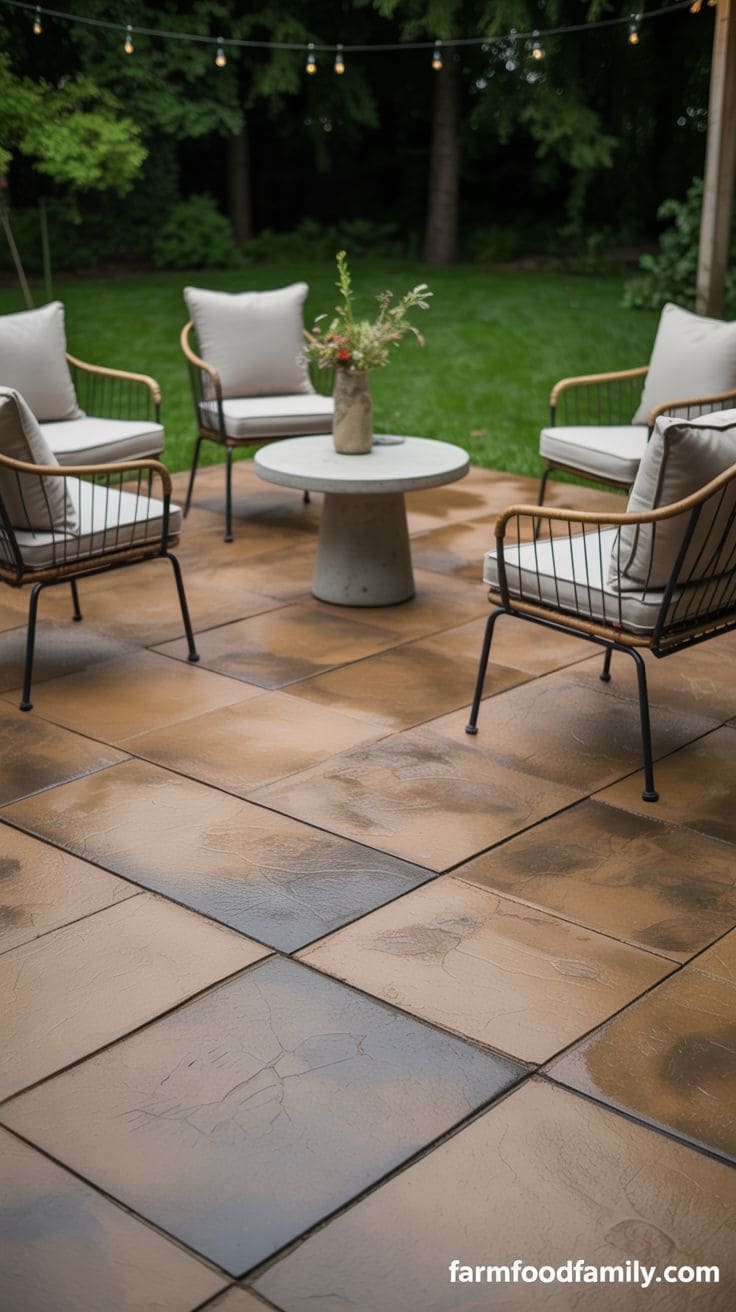
Stamped concrete is a popular choice for people seeking the appearance of natural stone without the high expense or care requirements. This method includes pressing patterns into freshly poured concrete to give the illusion of flagstone, slate, brick, or even wood planks.
Choose earthy tones such as sandstone, charcoal, or warm browns to give the room an organic, grounded appearance.
The textured surface adds flair and improves traction, making it more suitable for wet conditions. To frame the space and define its edges, use stamped borders.
To create a cozy, natural atmosphere, combine this style with wrought iron or wood patio furniture, potted plants, and soft outdoor lighting.
Stamped concrete looks great in classic gardens and rustic backyards, combining elegance and resilience in one seamless surface.
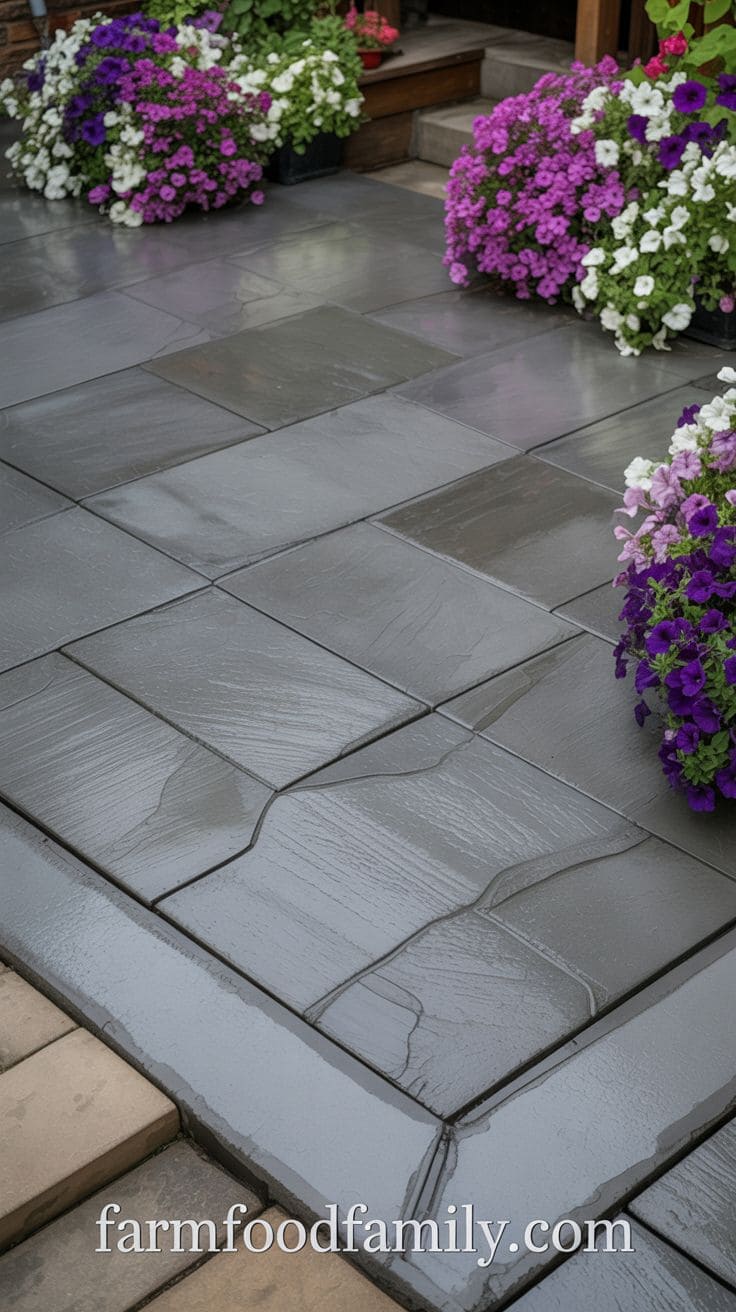
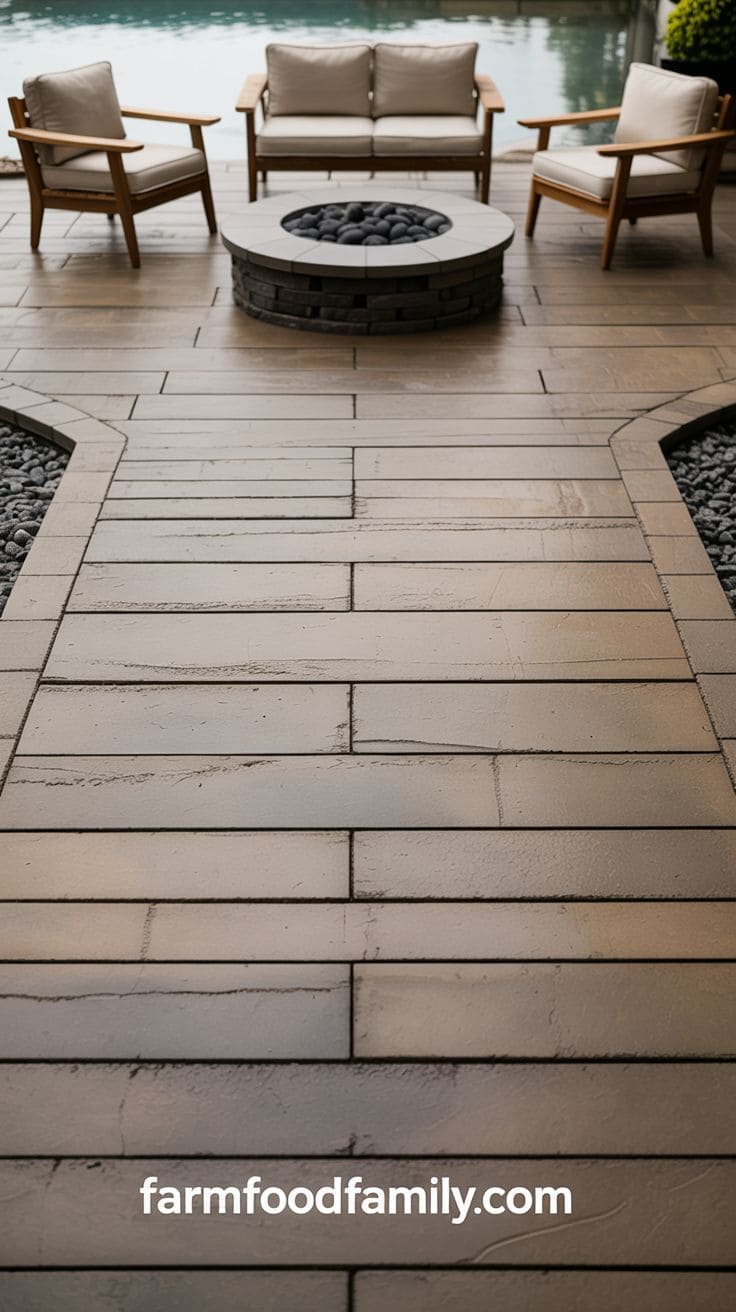
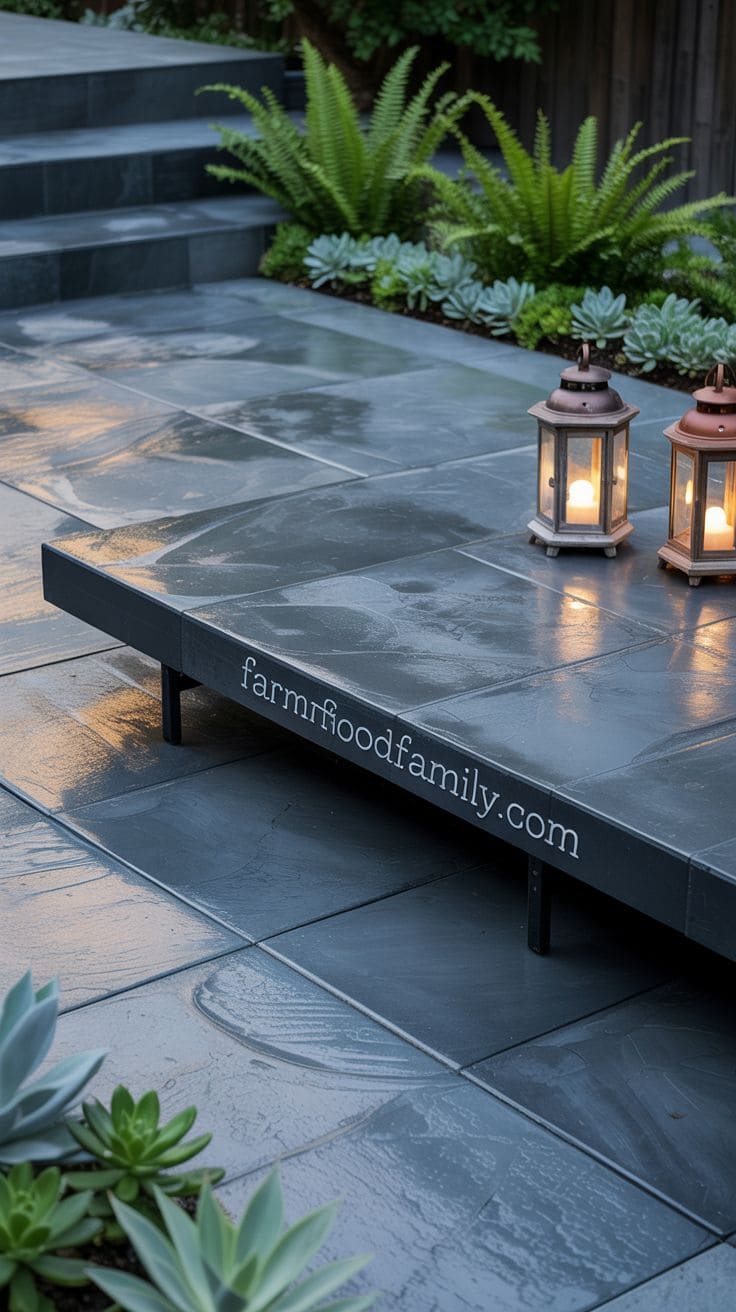
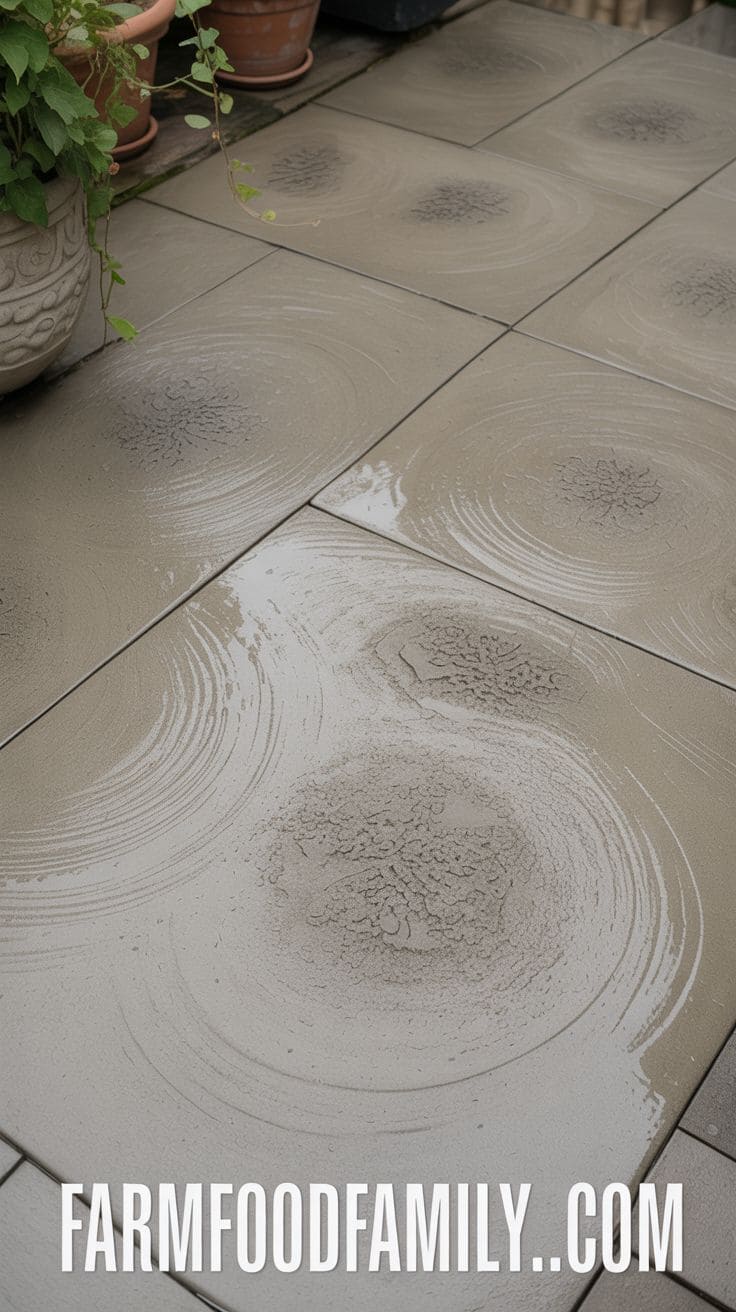
2. Sleek Modern Slab Layouts
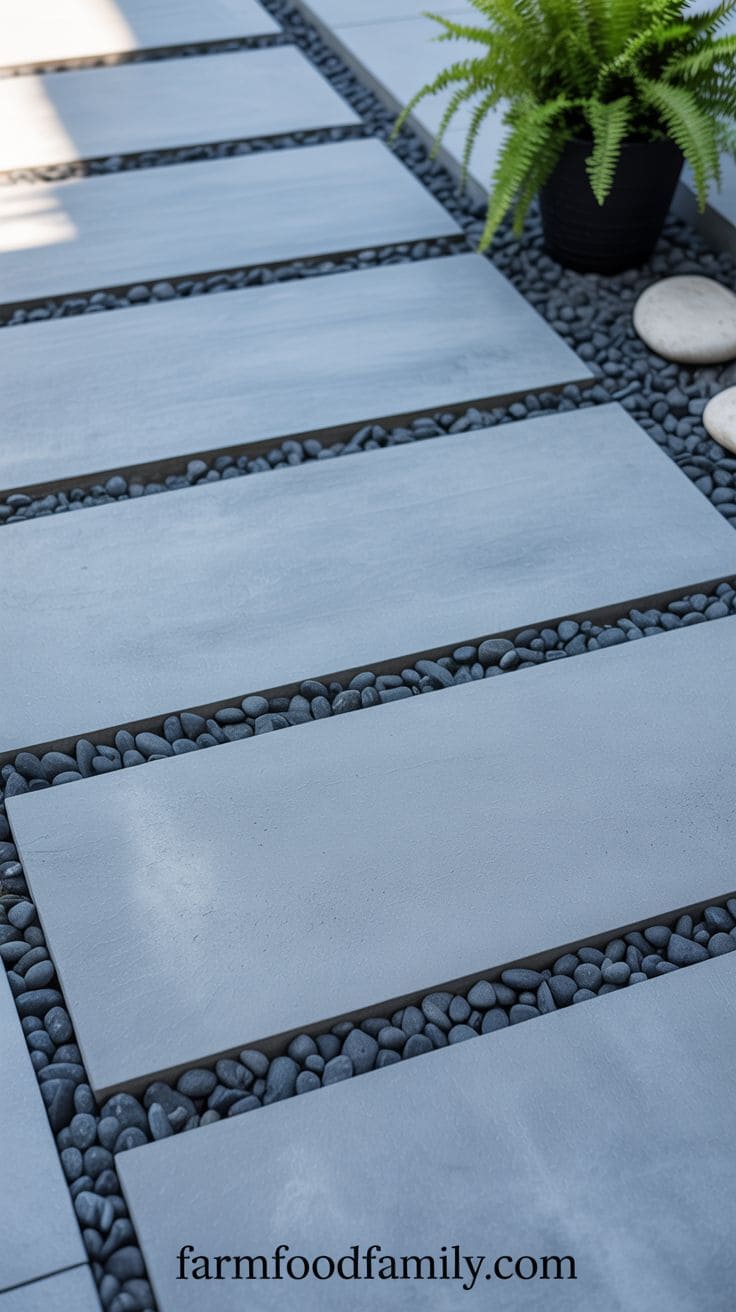
Large rectangular concrete slabs offer a clean, contemporary design. This design defines the patio with simple geometric shapes, while the distance between slabs facilitates drainage and adds texture.
This layout pairs well with modern architecture and minimalist garden designs.
To maintain a fresh and modern appearance, choose smooth, light gray, or white-toned concrete.
The addition of fine black gravel or creeping ground covers between the slabs can provide a startling contrast while relaxing the landscape.
For a coherent, stylish look, consider adding low-profile seating, built-in benches, or sleek outdoor sectionals.
This patio design is also suitable for smaller spaces because it creates a sense of openness and organization.
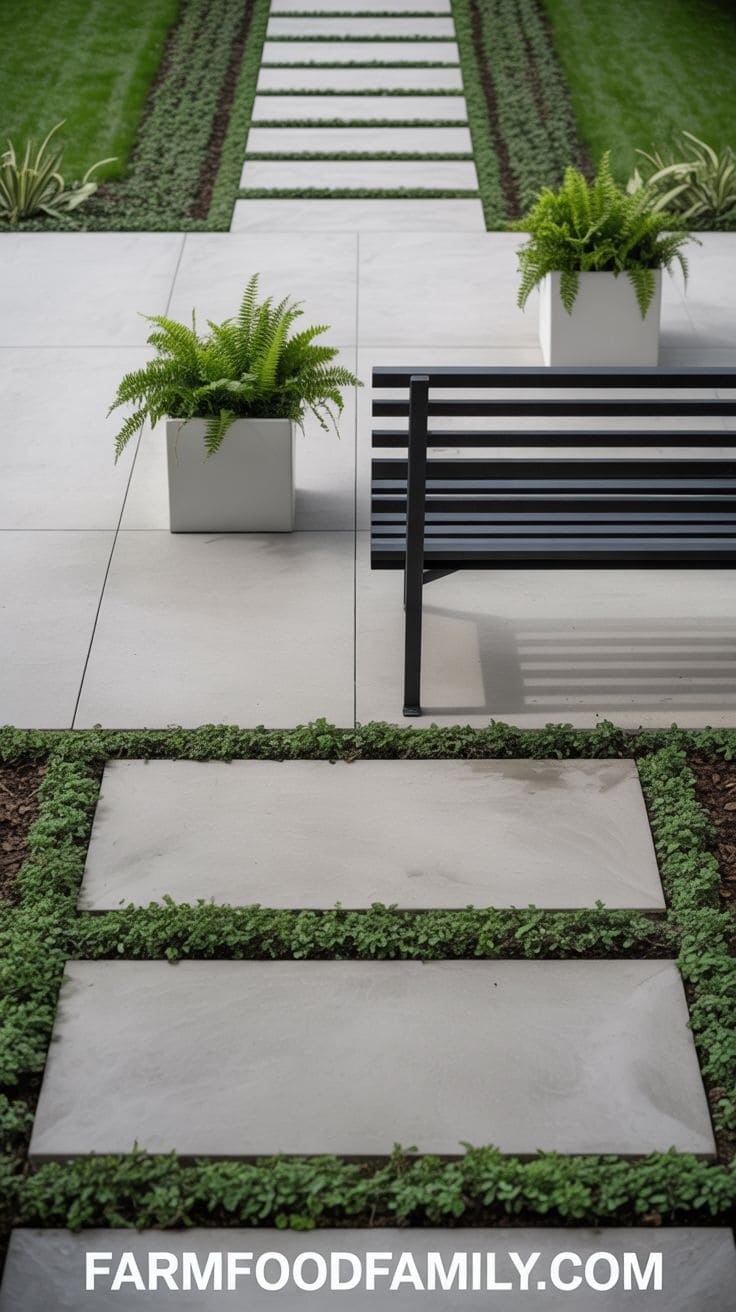
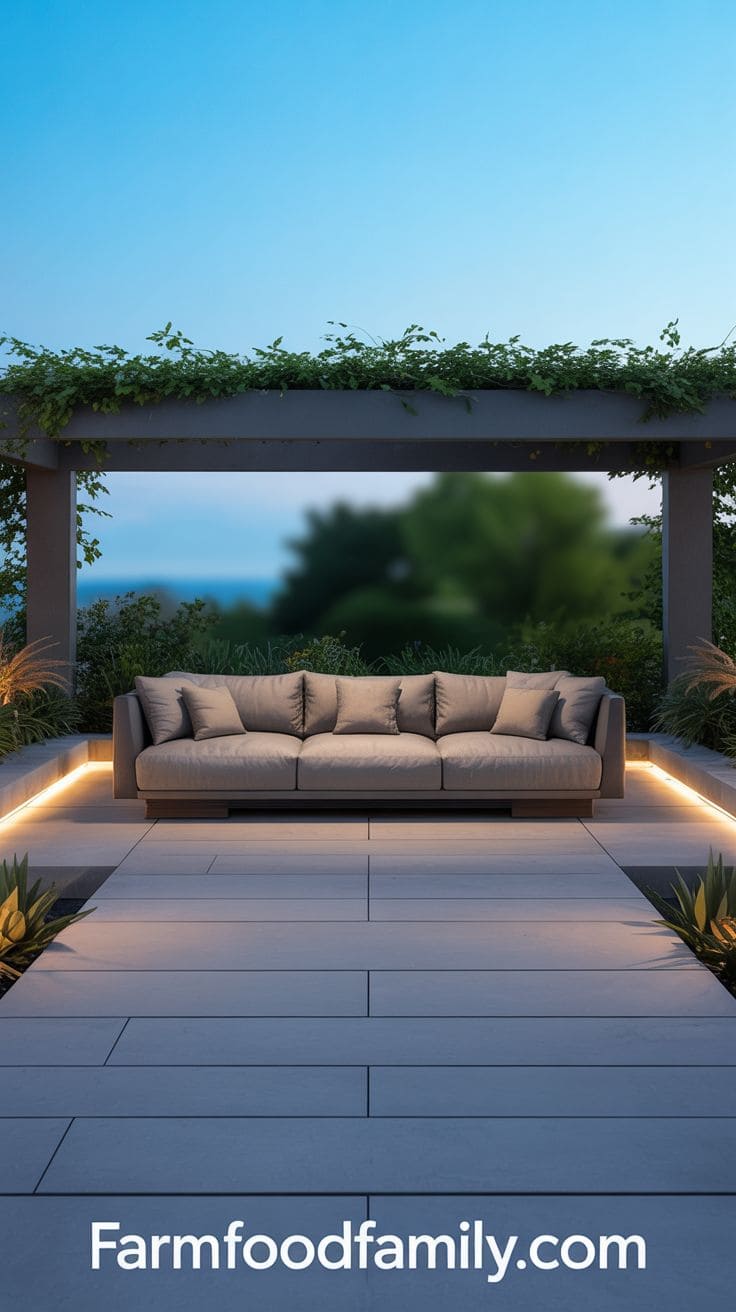
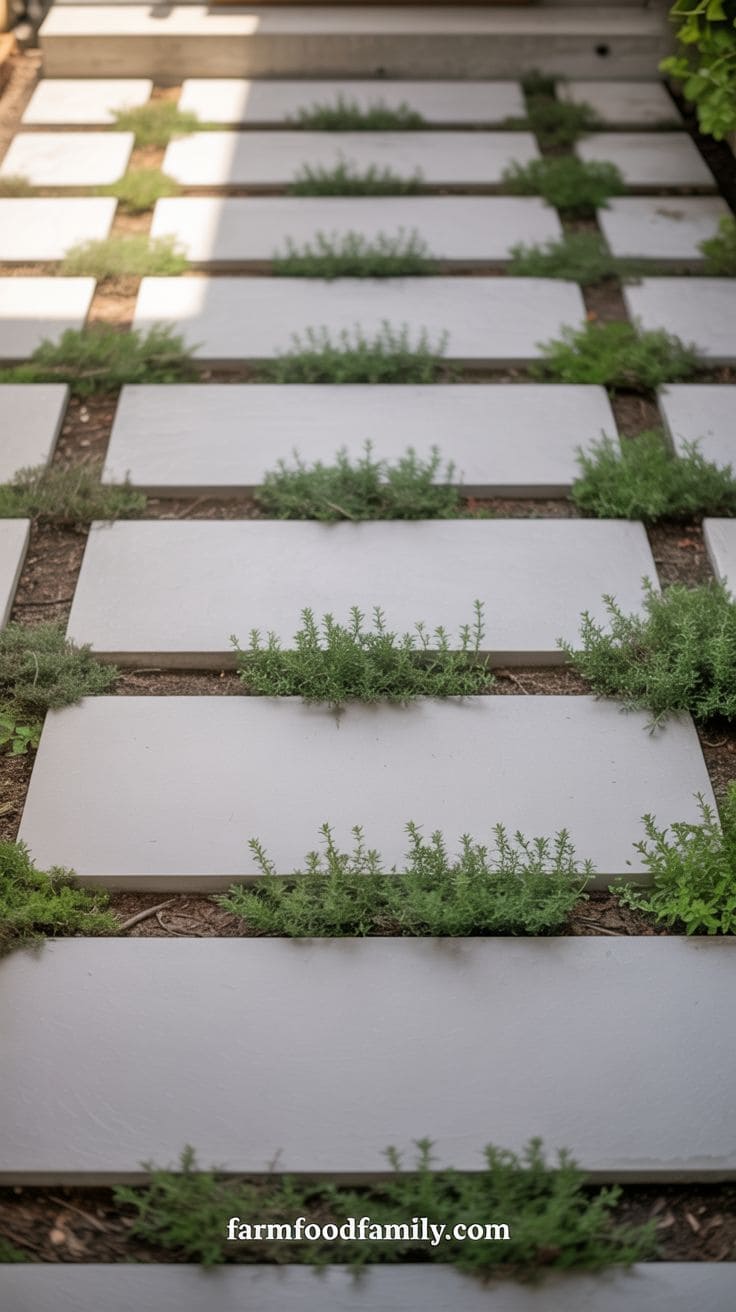
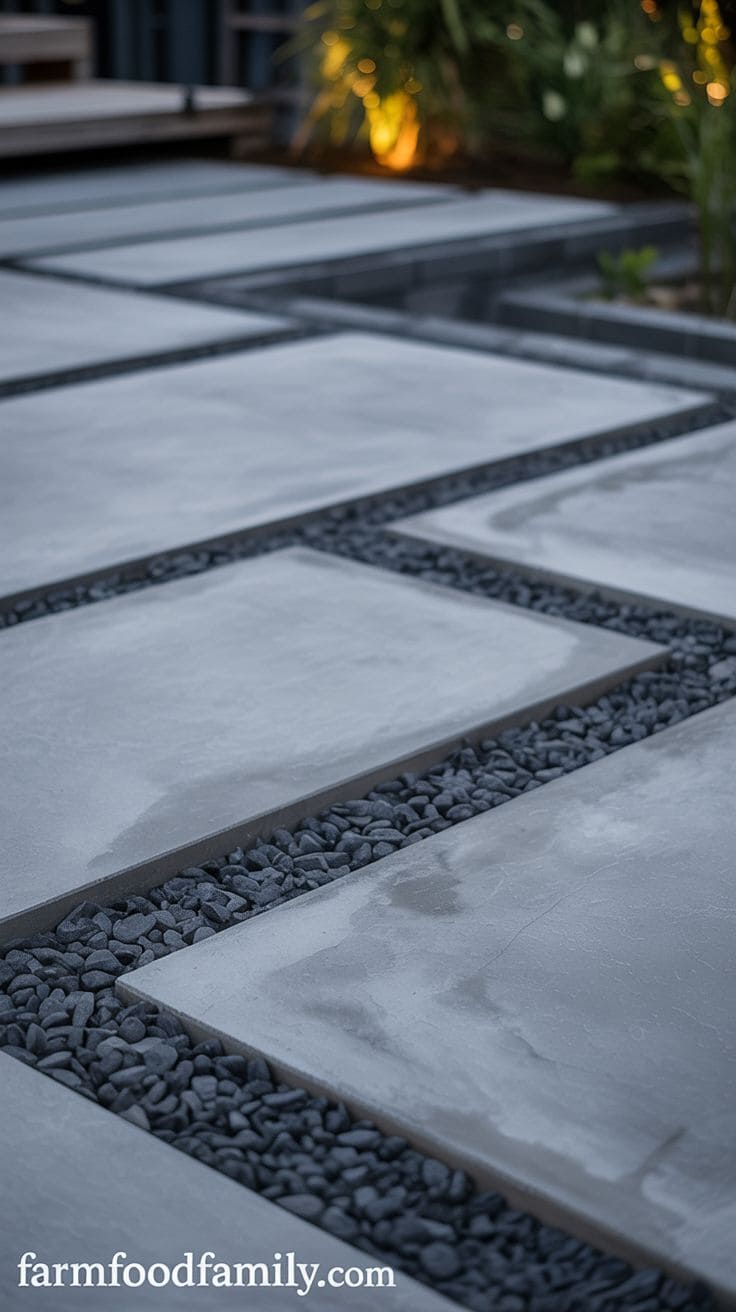
3. Concrete Patio with Built-In Planters and Seating

Pouring a concrete patio with integrated elements such as planters and seating walls is one way to maximize the functionality of your outdoor space.
These built-ins can be poured into the slab with concrete blocks and finished with stucco, smooth plaster, or textured concrete.
Built-in planters allow you to include greenery and flower decorations directly into your patio design, eliminating the need for additional pots and furnishings.
Raised concrete benches can serve as retaining walls in sloped yards or as casual seating around a fire pit or table.
Paint or stain the concrete elements to provide visual interest, or leave them natural for a raw, industrial look.
For comfort and softness, combine cushions and climbing plants, combining hardscape and landscape in a smooth flow.

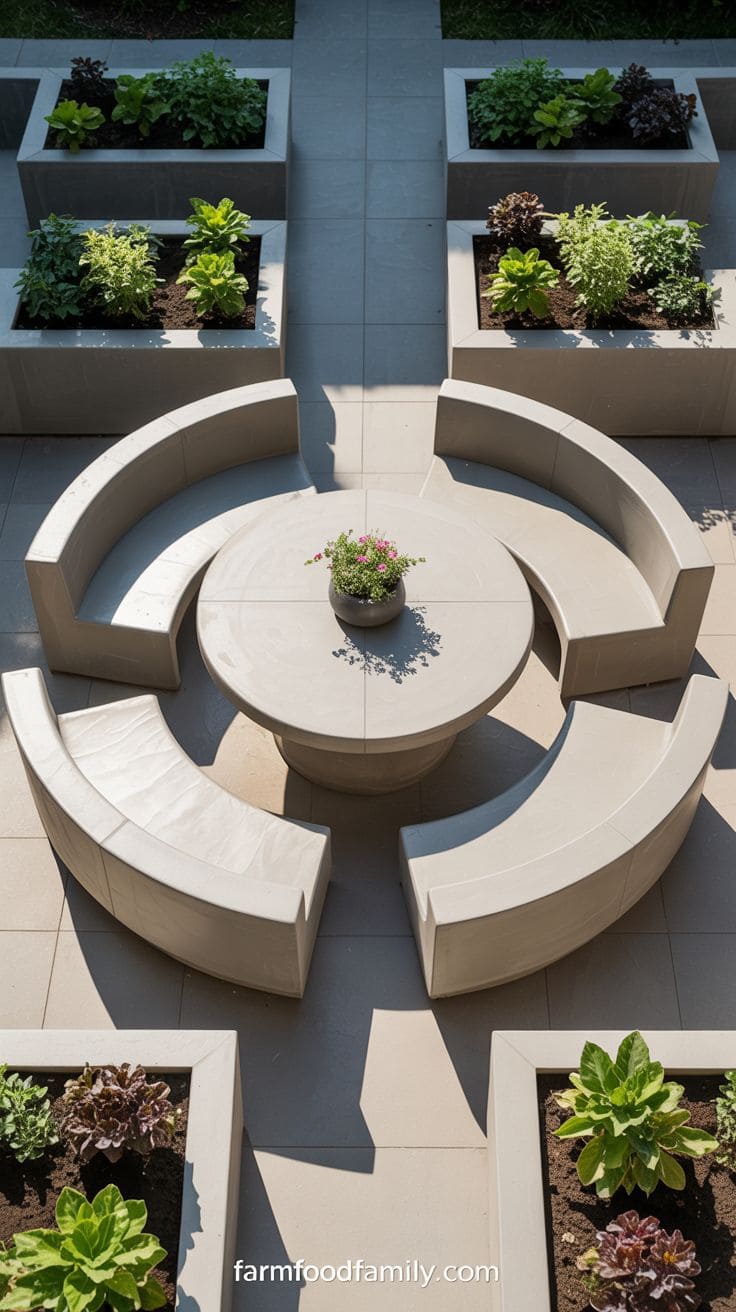

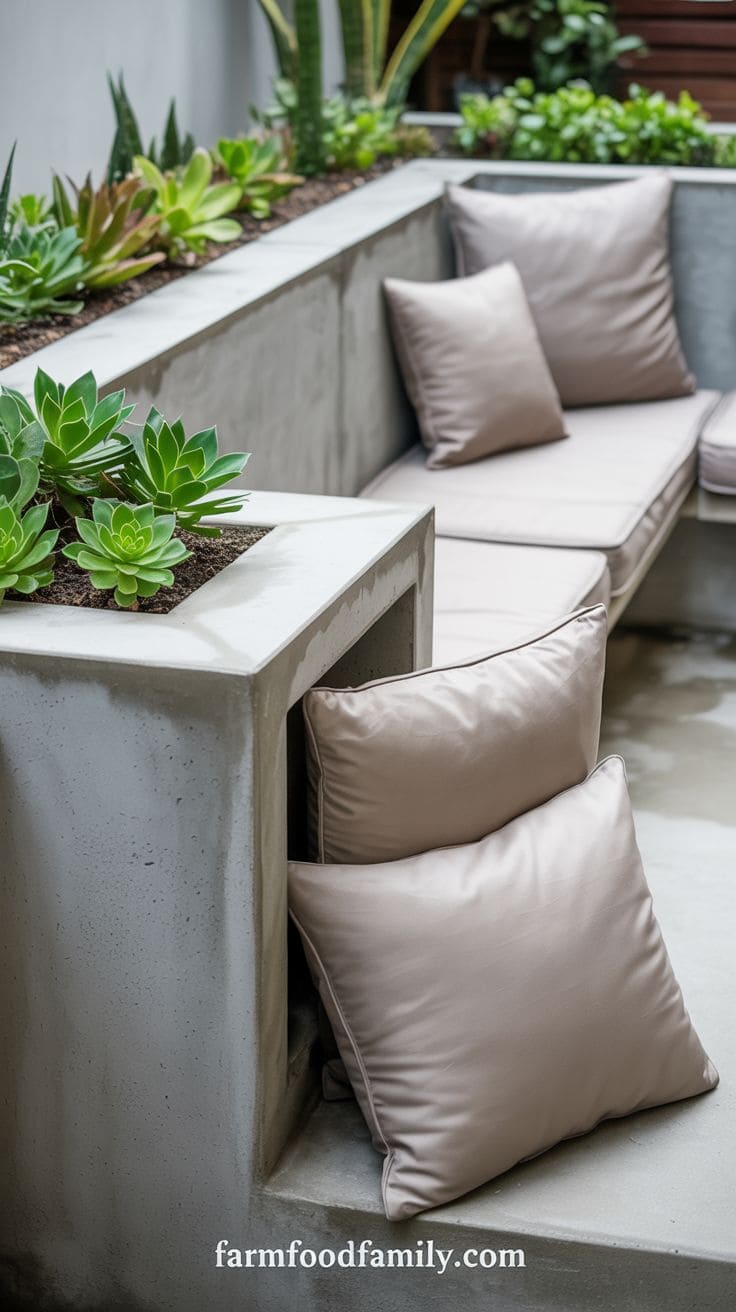
4. Polished Concrete Patio for a Refined Look
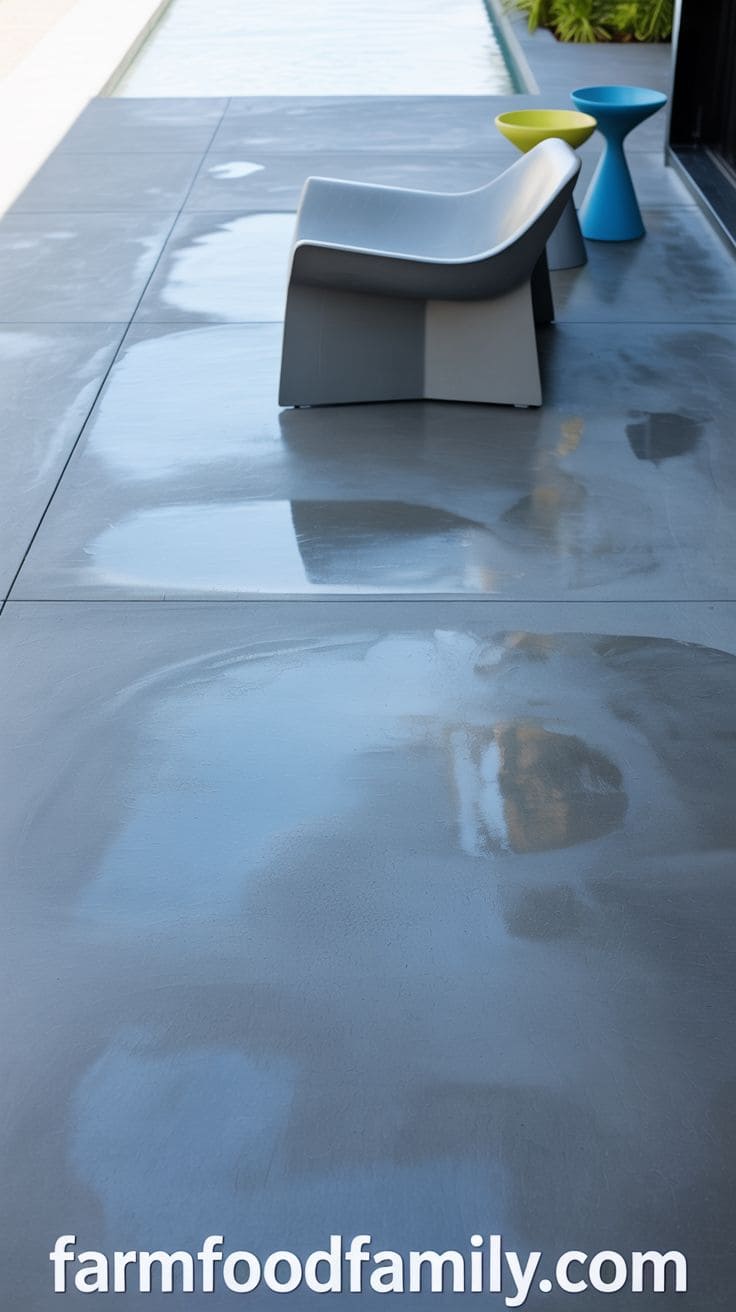
Polished concrete converts a typical patio surface into a smooth, glossy expanse that reflects light and creates a luxurious, modern ambiance.
This finish is obtained by grinding the concrete surface with increasingly finer tools until it has a mirror-like gloss.
Polished concrete is not only physically appealing, but also extremely durable and easy to maintain.
To add depth, apply an acid stain or dye before polishing to achieve a marbled effect or rich color variation.
This look complements modern patio furniture, sculptural planters, and minimalist lighting.
Polished concrete is particularly suitable for covered patios or areas protected from direct sunlight and rain, as it retains its shine better under regulated conditions.
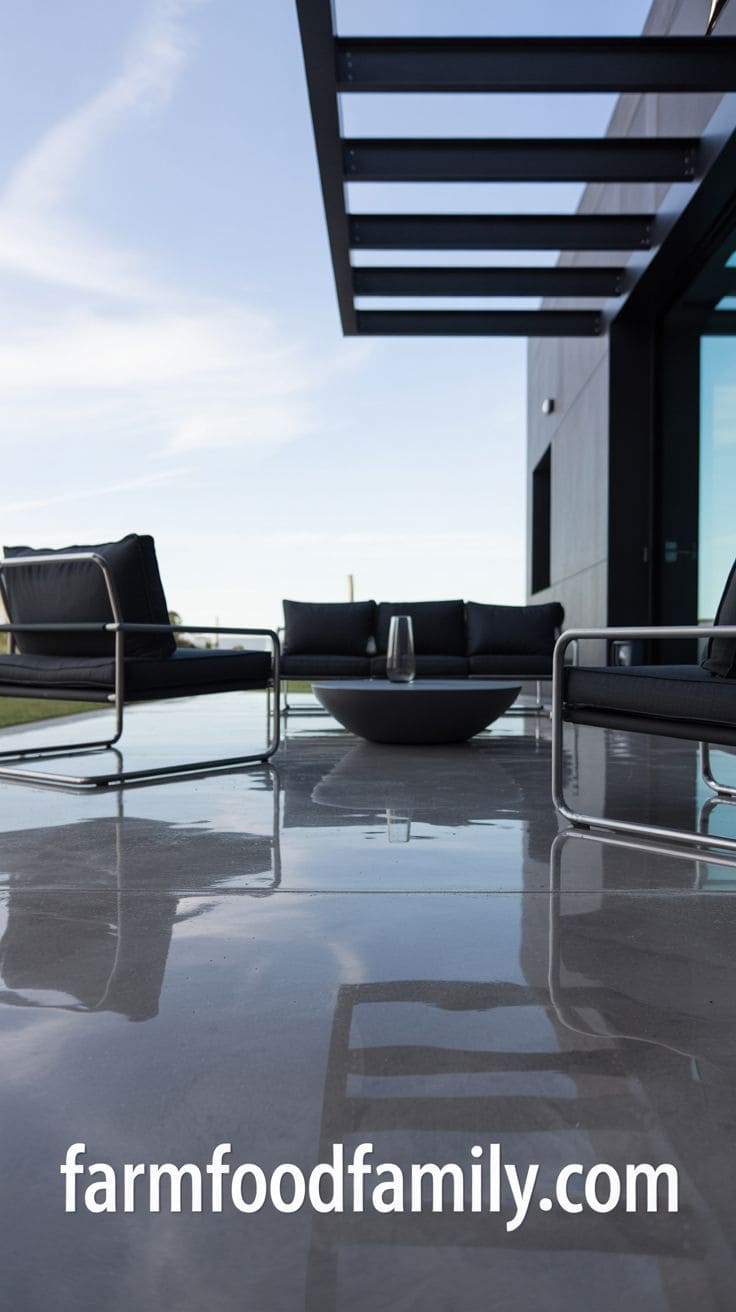


5. Concrete Cobble Stone Garden Path

6. Concrete Stepping Stone With a Cake Pan

7. Concrete and Redwood Bench

8. Modern Concrete Wood Planter

9. Concrete Bubbling Garden Fountain

10. Concrete House Number

11. Embossed Stepping Stone

12. Concrete Slab Flower Window Stand

13. Concrete Mushrooms in Stained Glass

14. Concrete Bowls

15. Concrete Candlestick

16. Concrete Flower Planter

17. Concrete Garden Pots

18. Concrete Fire bowl

19. Concrete Pumpkin

20. Concrete Light Stand

21. Concrete Plant Stand

22. Concrete Vase from bottle

23. Concrete Garden Bench

24. Large Concrete Planters

25. Concrete Garden Balls

26. Concrete Beverage Cooler

27. X-Brace Side Table Concrete Top Under $30

28. Concrete Fire pit

29. More Concrete Patio Ideas




Concrete patios offer a perfect balance of practicality and design versatility, making them an excellent foundation for outdoor living spaces of all styles. Whether you’re drawn to the sleek modern architecture or cozy rustic retreats, concrete adapts to your aesthetic with ease.
From stamped and stained finishes to integrated seating and layered elevations, the material opens up countless opportunities for creative expression while standing up to the elements with minimal maintenance.
With careful planning and thoughtful details, a concrete patio can transform your backyard into a durable, elegant, and highly personalized extension of your home.
If you enjoyed this article, leave a comment below and share it with your family and friends!

